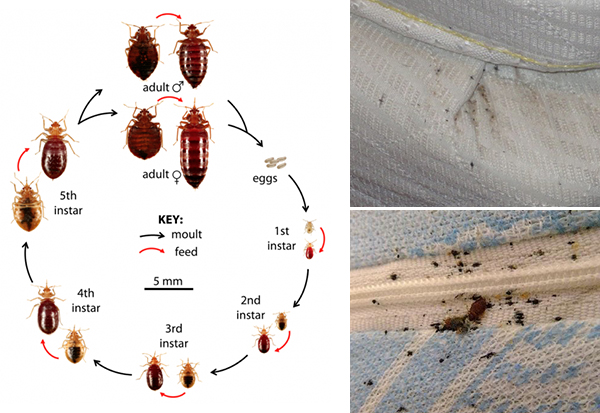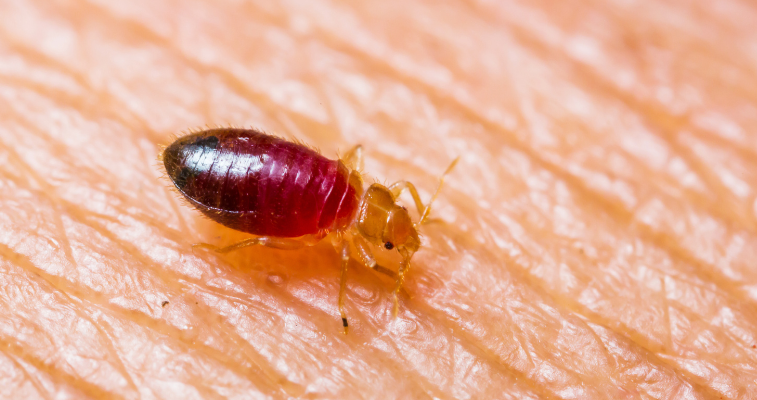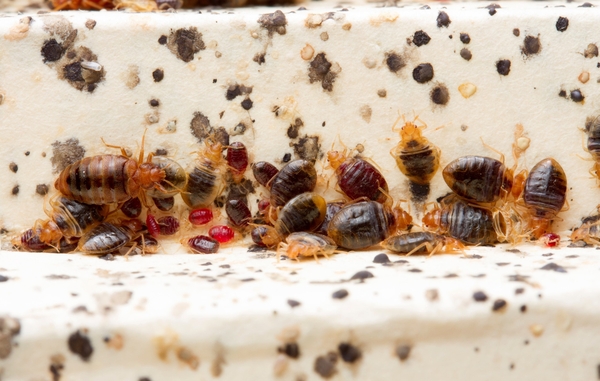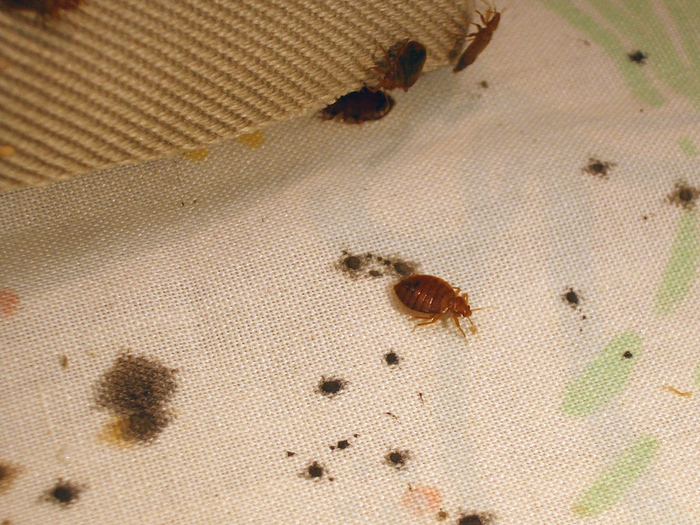To prevent bed bugs, regularly wash and dry bedding on high heat. Vacuum often and inspect luggage after travel.
Bed bugs are pesky insects that can invade your home and cause distress. Implementing preventive measures is crucial to avoid infestations and costly extermination treatments. By following simple practices such as regularly washing and drying bedding on high heat, vacuuming carpets and furniture, and inspecting luggage after traveling, you can significantly reduce the risk of bringing these unwelcome pests into your living space.
This article will provide you with practical tips and strategies to help you keep your home free from bed bugs and maintain a peaceful environment for you and your family.

Credit: www.domyown.com
Understanding Bed Bugs
Learn how to prevent bed bug infestations with our comprehensive guide. Discover effective strategies and tips to keep your home free of these unwanted pests and enjoy a peaceful night’s sleep.
What Are Bed Bugs
Pesky little pests, bed bugs are small insects that feed on the blood of humans while they sleep.
Signs Of Bed Bug Infestation
It’s crucial to know how to spot these critters before they become a major problem.
To steer clear of bed bugs, it’s essential to comprehend these troublesome pests. They are expert hitchhikers, traveling from place to place through clothing, luggage, and furniture.
Preventative Measures At Home
Protect your home from bed bugs by taking proactive measures. Inspecting second-hand furniture and regularly laundering bedding are key steps to keep these pesky pests at bay.
Inspecting Second-hand Furniture
When bringing in second-hand furniture, thoroughly check for any signs of bed bugs. Look for dark spots, shed skin, or live bugs in the crevices and seams.
- Use a flashlight to inspect all areas of the furniture
- Seal any cracks or gaps with caulk to prevent bed bugs from hiding
Regularly Laundering Bedding
Bedding can be a breeding ground for bed bugs. Wash your sheets, pillowcases, and blankets regularly in hot water to kill any bed bugs or eggs.
- Wash bedding in hot water at least once a week
- Dry bedding on high heat to ensure all bed bugs are eliminated
Travel Tips To Avoid Bed Bugs
When traveling, it’s essential to be mindful of the presence of bed bugs to prevent bringing them back home. Here are some travel tips to help you avoid encountering these pesky pests.
Inspecting Hotel Rooms
Upon arriving at your hotel, take a few minutes to inspect the room for any signs of bed bugs. Start by checking the mattress seams, sheets, and headboards for small, reddish-brown stains or tiny black spots, which are indicative of their presence.
Keeping Luggage Off The Floor
Keeping your luggage off the floor can significantly reduce the risk of bed bugs hitching a ride home with you. Use a luggage rack provided by the hotel to elevate your belongings off the ground—the smooth, metal surface makes it difficult for bed bugs to climb on.
Effective Bed Bug Treatments
When it comes to dealing with bed bugs, effective treatments are crucial to ensure complete eradication. Whether you choose to hire professional extermination services or opt for home remedies and natural solutions, taking prompt action is essential to prevent these pesky bugs from multiplying and infesting your living spaces.
Professional Extermination Services
When faced with a severe bed bug infestation, it is advisable to seek the expertise of professional extermination services. These professionals have the knowledge, experience, and access to specialized equipment to effectively eliminate bed bugs from your home. They will conduct a thorough inspection, identify the extent of the infestation, and develop a targeted treatment plan to eradicate the bugs. Professional extermination services may include:
- Heat treatments: Exterminators use high temperatures to kill bed bugs at all life stages. Heat treatments are effective in eliminating bugs residing in furniture, mattresses, and other infested areas.
- Pesticide application: Extermination professionals may employ insecticides to target bed bugs in hard-to-reach areas. These treatments are carefully applied to prevent harm to humans and pets.
- Steam treatments: Steam is an eco-friendly method that can be used by professionals to kill bed bugs. The high temperatures effectively penetrate furniture, curtains, and carpeting to eliminate these pests.
Home Remedies And Natural Solutions
If you prefer a more DIY approach or have a minor bed bug issue, there are several home remedies and natural solutions that can help in getting rid of these critters. While these methods may not be as effective in severe infestations, they can be an economical and chemical-free option for small outbreaks. Consider the following:
- Washing and drying: Machine wash infested bedding, clothing, and fabrics in hot water, followed by high-temperature drying. The heat kills bed bugs and their eggs.
- Vacuuming: Regularly vacuuming infested areas helps remove bed bugs, their eggs, and shed skins. Remember to dispose of the vacuum bag in a sealed plastic bag immediately.
- Encasements: Use bed bug-proof encasements to cover mattresses and box springs. These encasements trap bugs inside, preventing them from biting and infesting the bed further.
- Diatomaceous earth: Sprinkling food-grade diatomaceous earth around infested areas can help dehydrate and kill bed bugs. This natural powder is safe for humans and pets but should be applied carefully.
Remember, effective bed bug treatments require persistence and consistency. It is crucial to follow the chosen treatment method diligently and monitor for any signs of reinfestation. Combine treatments with regular cleaning and decluttering to keep these unwanted guests at bay.
Dealing With Bed Bugs In Shared Spaces
Learn effective ways to avoid bed bugs in shared spaces with these practical tips. By keeping your belongings clean, inspecting furniture and mattresses, and sealing any cracks or crevices, you can protect yourself from these unwanted pests.
Tips For Dormitories And Apartments
Living in a shared space like a dormitory or apartment can increase the risk of encountering bed bugs. These pesky critters have a knack for hitchhiking and can easily spread from room to room, making it crucial to stay vigilant and take proactive measures to prevent infestations.
1. Keep Clutter to a Minimum
When it comes to bed bugs, less clutter means fewer places for them to hide. Keep your living space tidy and organized, disposing of any unnecessary items. Avoid storing belongings under your bed or in hidden nooks and crannies where bed bugs can easily take up residence.
2. Use Bed Bug-Proof Mattress Covers
A mattress cover designed to keep bed bugs out can be an effective tool in preventing infestations. These covers create a barrier that prevents bed bugs from entering or escaping your mattress. Make sure to choose a high-quality, zippered cover that fully encases your mattress to provide optimum protection.
3. Launder and Dry Bedding on High Heat
Bed bugs cannot withstand high heat, so regularly washing and drying your bedding on the highest heat setting can help kill any potential hitchhikers. Be sure to wash not only your sheets and pillowcases, but also your blankets, mattress pads, and any other fabric items that may come into contact with the bed.
4. Inspect Second-hand Furniture and Clothing
Before bringing any used furniture or clothing into your shared space, thoroughly inspect it for signs of bed bugs. Look for dark stains or spots on upholstery, small brownish insects, or shed skins. If you notice anything suspicious, it’s best to avoid the item altogether to prevent introducing bed bugs into your living area.
Community Measures And Reporting
1. Communicate with Roommates and Neighbors
Open communication with your roommates or neighbors is essential when it comes to battling bed bugs in shared spaces. If anyone suspects they have an infestation, they should immediately inform the others so appropriate action can be taken. Early detection and intervention can help contain the problem and prevent it from spreading.
2. Report Bed Bug Sightings to the Authorities
Many dormitories and apartments have protocols in place for dealing with bed bug infestations. If you spot any signs of bed bugs in shared spaces such as common rooms, laundry facilities, or hallways, report it to the appropriate authorities. Prompt reporting can prompt swift action to eradicate the infestation and protect the community.

Credit: www.rentokil.com
Recognizing And Addressing Bed Bug Bites
Recognizing and addressing bed bug bites is essential for preventing infestation. To avoid getting bed bugs, inspect hotel rooms and luggage thoroughly, and vacuum and clean your belongings after returning from a trip. Use protective mattress and box spring encasements to protect your bed and invest in bed bug traps for early detection.
Identifying Bed Bug Bites
Bed bug bites can be easily mistaken for bites from other insects, making it important to be able to identify them correctly. Recognizing bed bug bites involves looking for small, red welts that are often arranged in a line or cluster. These bites are typically itchy and can cause irritation, swelling, and in some cases, an allergic reaction. Additionally, bed bug bites can appear hours or even days after being bitten, adding to the challenge of identifying them.
Treatment For Bed Bug Bites
When addressing bed bug bites, it’s crucial to alleviate the itching and discomfort while also preventing infection. Washing the bites with soap and water can help reduce itching and prevent secondary infection. Applying a cold compress can also provide relief from the itching and swelling. Over-the-counter antihistamines may help to minimize allergic reactions, while corticosteroid creams can reduce inflammation. It’s important to seek medical attention if the bites become infected or if there is a severe allergic reaction.
Educational Resources And Support
When it comes to preventing bed bugs, having access to educational resources and support is crucial. Here we’ll explore some important avenues for gaining knowledge and assistance to keep these pesky pests at bay.
Bed Bug Awareness Programs
Bed bug awareness programs offer valuable information on identification, prevention, and treatment. These programs are designed to educate the public on the signs of an infestation and provide tips on how to avoid bringing bed bugs home.
Seeking Professional Help
Professional help is essential if you suspect a bed bug infestation. Trained experts can inspect your home, recommend treatment options, and help you eradicate the problem effectively. Don’t hesitate to seek assistance to ensure a bed bug-free environment.
Conclusion And Long-term Prevention
To prevent bed bugs long-term, regularly inspect and vacuum your living spaces. Wash and dry bedding on high heat and seal cracks to reduce hiding spots. Use caution when buying second-hand furniture to avoid infestations.
Maintaining Vigilance
Regularly inspect your living space for any signs of bed bugs such as reddish stains on sheets or tiny dark spots on surfaces.
Wash and dry all bedding and clothing on high heat settings to eliminate any potential bed bug infestations.
Vacuum your mattress and furniture frequently to remove any bed bugs or eggs that may be present.
Creating A Bed Bug Prevention Plan
Seal any cracks or crevices in walls, furniture, or flooring to prevent bed bugs from entering your home.
Use protective covers on mattresses and box springs to create a barrier against bed bugs.
Declutter your living space to minimize hiding spots for bed bugs and make it easier to detect any infestations.

Credit: content.ces.ncsu.edu
Frequently Asked Questions On How To Not Get Bed Bugs
How Do You Prevent Bed Bugs From Coming Home With You?
To prevent bed bugs from hitchhiking home, inspect your luggage and clothing after traveling. Wash and dry your clothes on high heat. Use a protective cover for your mattress and regularly vacuum your home. Avoid placing your luggage on beds or upholstered furniture while traveling.
What Are The Signs Of A Bed Bug Infestation?
Signs of a bed bug infestation include itchy red bites on your body, small bloodstains on your sheets or mattress, dark spots or droppings on your bedding, and a musty odor in your bedroom. You may also find discarded bed bug shells or live bugs hiding in crevices or seams of your mattress.
How Do You Treat Bed Bug Bites?
To treat bed bug bites, wash the affected area with soap and water to reduce the itchiness. Apply a corticosteroid cream or take an oral antihistamine to relieve the itching. Avoid scratching the bites to prevent infection. If the bites are severe or persist, consult a healthcare professional.
Conclusion
Incorporating proactive measures into your routine will significantly reduce the risk of encountering bed bugs. By staying informed and taking preventive action, you can safeguard your home and belongings. Remember to remain vigilant, especially when traveling, inspecting secondhand furniture, and regularly cleaning and decluttering your living spaces.
These simple steps will help protect you from bed bugs and maintain a peaceful environment.
Related posts:

I’m MD Tanvir, and I bring years of expertise gained from working closely with pest control companies to the forefront. My journey in the industry has inspired me to launch Bug Battler, a platform aimed at equipping people with the know-how to combat pests autonomously. Through Bug Battler, I aim to empower individuals with practical insights to tackle pest infestations effectively.

